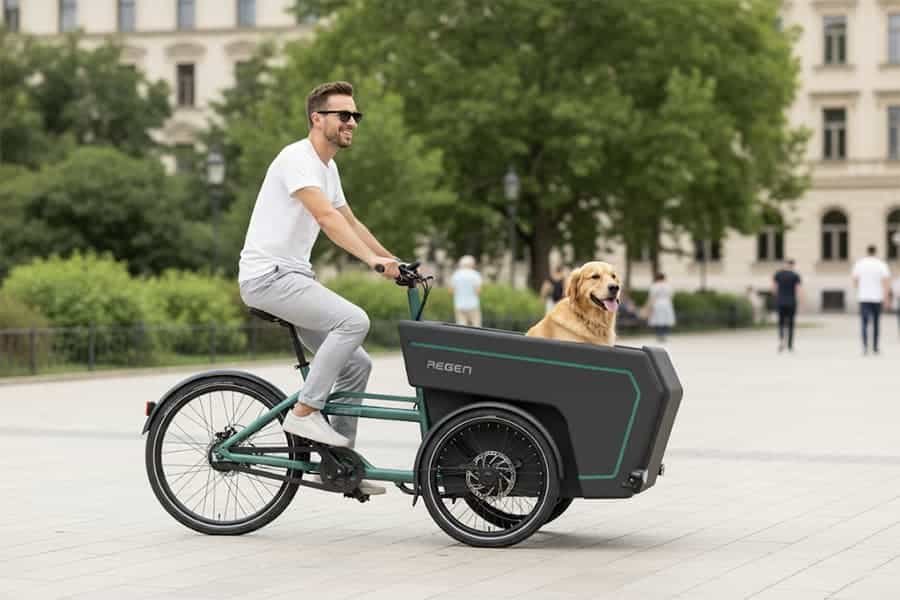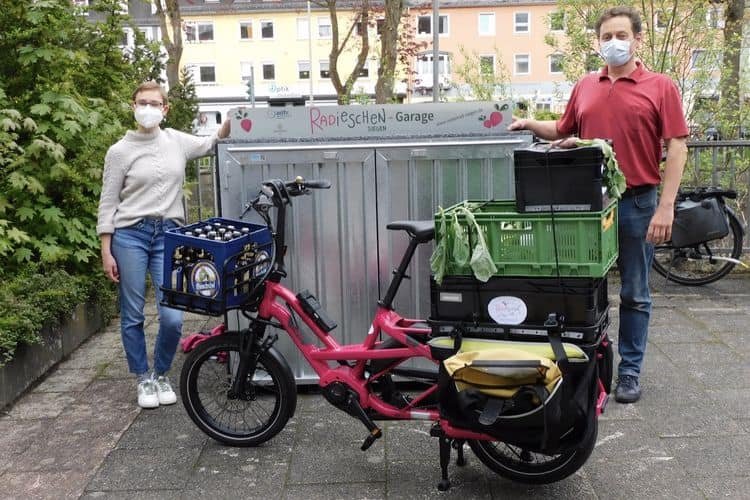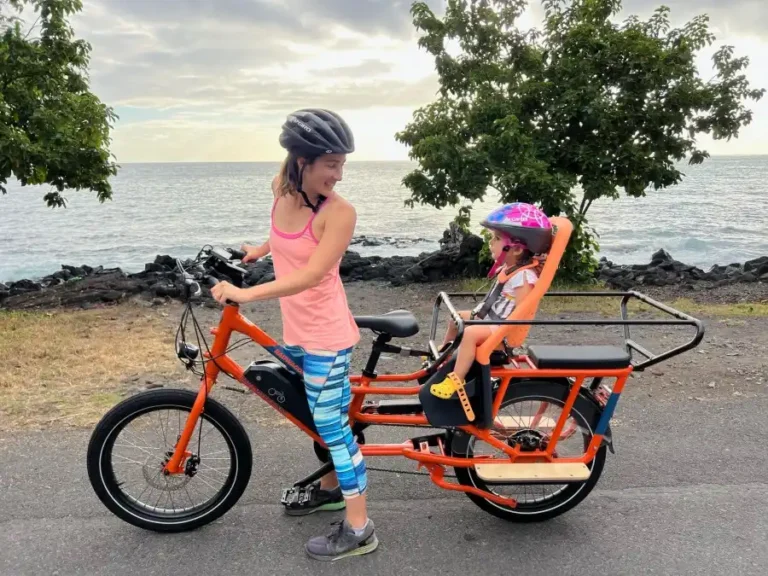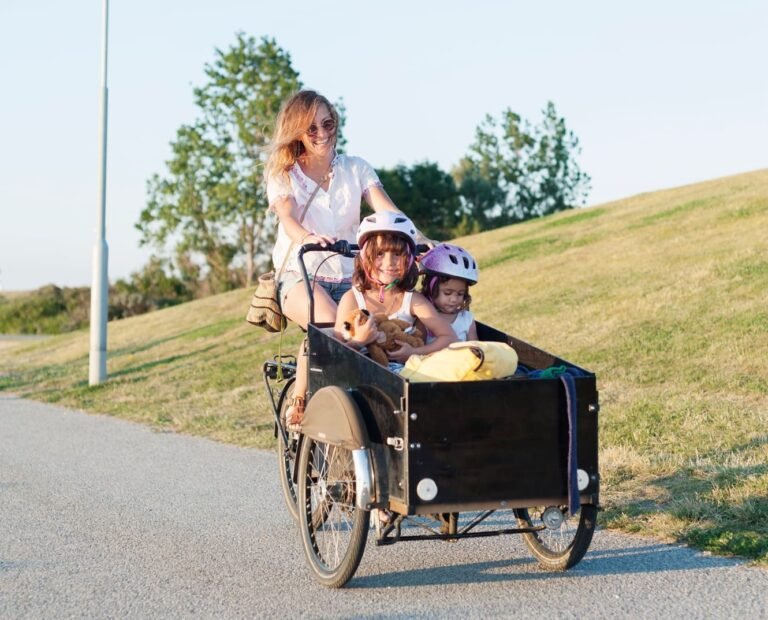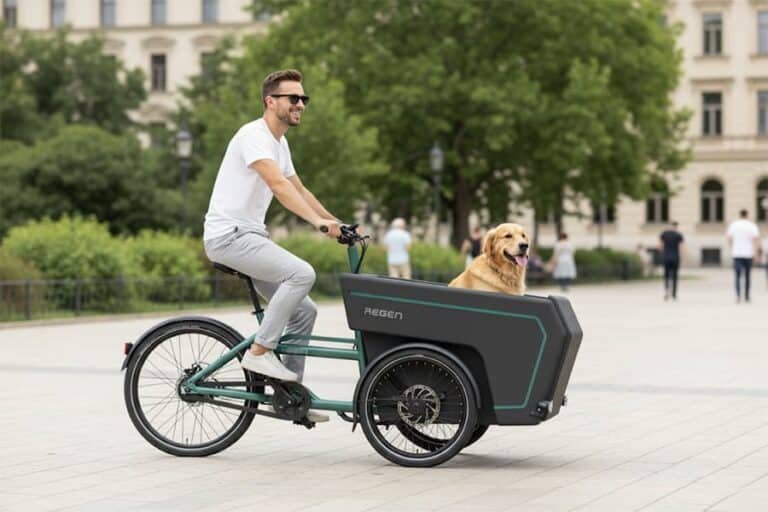If you’re shopping for an e-bike — including a lastcykel — you’ll very likely come across the terms Class 1, Klass 2och Class 3. These labels matter because they help define how the bike behaves, where you can ride it, and what rules apply. Below, I unpack in detail what each class means, why it matters for a cargo-e-bike, and what to watch out for in terms of regulation and usability.
Why Classes Exist
E-bikes blur the line between “regular bicycle” and “motorised vehicle”. To help regulators, infrastructure managers and riders make sense of things, many jurisdictions in the U.S. have adopted a three-class system for electric bicycles.
In short: the classes distinguish how the motor works (pedal-assist vs throttle), and how fast it will assist (20 mph or 28 mph).
This matters for your cargo bike because where you’re allowed to ride — multi-use paths, bike lanes, trails — often depends on the class. Also, the class affects how the bike feels under load (especially important when you’re hauling cargo).
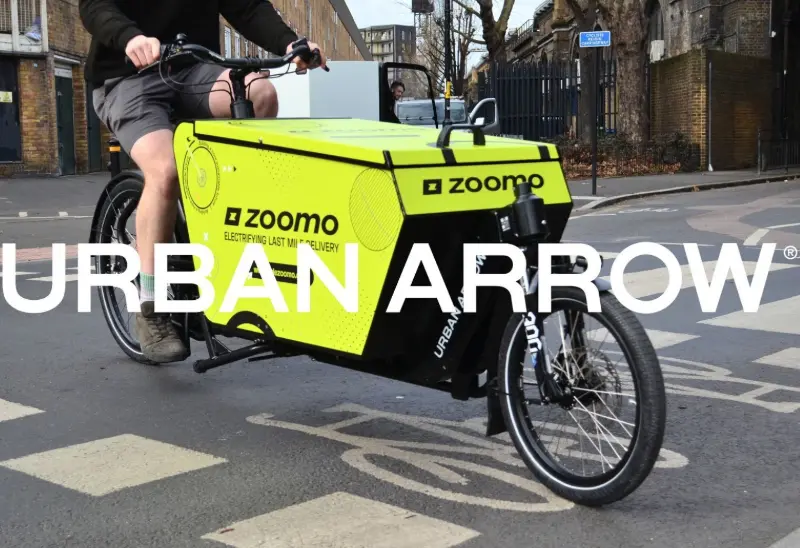
Class 1 Electric Bikes – “Pedal-Assist Only, Up to 20 mph”
Definition: A Class 1 e-bike is equipped with a motor that provides assistance only when the rider is pedaling, and the assistance cuts off at 20 mph.
How it rides: It feels like a regular bike, but when you pedal the motor helps. You don’t get motor assistance if you just twist a throttle and sit back (unless the bike has a weird exception, but standard definition is no throttle).
Why it matters for cargo use:
- Because you must pedal, you’ll still get good exercise and remain engaged.
- The 20 mph cap means it’s safe for many shared-use paths, mixed traffic, and trails (depending on local rules). Many trail systems explicitly permit Class 1 bikes.
- When carrying heavy loads (kids, gear, groceries) a Class 1 bike still gives you motor help, but you’ll rely on pedaling for full performance.
What to look out for:
- Battery and motor sizing: Because you’re pedaling, you still want a motor with enough torque to handle the weight of a loaded cargo bike.
- Terrain: With a heavy load, pedaling uphill + 20 mph limit means you’ll be slower — but that may be okay depending on your use case.
- Access: For many paths / trails where “motorised bikes” are restricted, Class 1 is often the safest bet for a cargo bike that carries children or passengers.
Class 2 Electric Bikes – “Throttle + Pedal, Up to 20 mph”
Definition: A Class 2 e-bike features both pedal-assist (motor engages when pedaling) och a throttle that can propel the bike regardless of pedaling. The assist (motor) cuts off at 20 mph.
How it rides: You can either pedal and let the motor amplify your effort (pedal-assist) eller simply twist/press the throttle and go—even without pedaling. Especially useful when you’re tired, hauling cargo, or want a break from pedaling.
Why it matters for cargo bikes:
- The throttle gives you an extra “boost” option, which is particularly valuable when carrying heavy loads (kids, groceries, gear) uphill or when you just want to cruise comfortably.
- The 20 mph cap keeps it within many of the same access zones as Class 1 bikes, though local rules vary.
- For families or cargo-use where the rider may vary (child, parent, grandparent), the throttle can make the ride more inclusive for someone less strong or less experienced.
Considerations / trade-offs:
- Battery draw: Using throttle heavily drains battery faster than pure pedal-assist. The heavier the load, the more important battery capacity becomes.
- Regulations: Some trails/paths might restrict throttle-only bikes more strictly than pedal-assist only.
- Feel: Some riders prefer the “pure pedal assist” feel rather than having a motor taking over via throttle.
Class 3 Electric Bikes – “High-Speed Pedal-Assist, Up to 28 mph”
Definition: A Class 3 e-bike has pedal-assist only (i.e., motor engages only when pedaling), but allows assistance up to 28 mph. Some states may allow throttle but many don’t.
How it rides: This is the fastest “legal” e-bike type (under the standard classification). It’s ideal for commuting, keeping up with traffic, or covering more ground quickly. You still pedal, but the bike can assist you to near-motorcycle speeds (relatively speaking) on a typical bike frame.
Why it could matter for a cargo bike:
- If your cargo bike is used for serious commuting (haul kids to school then ride to work), going faster may be a big plus.
- The 28 mph assist means less effort on long rides or when carrying heavy loads, meaning you arrive fresher.
- Particularly useful if your route includes busy roads and you want to keep pace with traffic.
Important regulatory / access implications:
- Because of the higher speed, Class 3 bikes often face more restrictions on where they can ride (bike paths, multi-use trails) compared to Class 1/2.
- Some states require helmet use or minimum age for Class 3. For example: in California, riders of Class 3 must be at least 16 and all riders under 18 must wear a helmet.
- Battery size, gear, braking, and safety become more critical when you’re moving faster with heavy cargo.
Choosing the Right Class for Your Cargo Bike Use Case
| Användningsfall | Ideal Class | Varför |
|---|---|---|
| Local errands, kids transport in neighbourhood (many side-paths) | Class 1 eller Klass 2 | Many shared-use paths/trails allow Class 1 (and often Class 2). Throttle (Class 2) adds flexibility for loaded rides. |
| Mixed use: commute + family haul + longer weekend rides | Klass 2 (eller Class 3 if you prioritise speed) | Throttle plus pedal-assist gives flexibility; moderate speed is fine. |
| Fast commuter hauling cargo (kids, gear) over roads, possibly longer distances | Class 3 | The higher assist speed lets you keep up with traffic, cover more ground. But check access restrictions. |
Other key considerations when choosing:
- Battery and motor specs: For a cargo bike you’ll often be heavier (bike + cargo + rider). A good motor with strong torque and a large battery will matter more than just the class label.
- Brakes and safety: For heavier loads and higher speeds (especially Class 3) you’ll need strong brakes, good tyres, good visibility equipment.
- Access and regulations: Even if your bike is capable of Class 3 speeds, local trails or multi-use paths may limit you to Class 1 or 2. Always check local regulations.
- Load and stability: A cargo bike has different handling than a regular e-bike. At higher speeds (Class 3) or when using throttle (Class 2) the dynamics change. Ensure the bike is built for cargo loads.
- Rider strength and preference: If you want to pedal and get exercise, Class 1 or 3 (pedal-assist only) might appeal. If you want less effort especially when hauling children or heavy cargo, Class 2 is a strong choice.
The Legal & Regulatory Landscape: What You Must Know
Understanding classification is half the battle — the other half is where you can ride och what rules apply. This is especially relevant for a cargo bike, because you may want to use bike lanes, multi-use trails, parks, etc.
Federal perspective
At the U.S. federal level, agencies like the National Park Service (NPS) and Bureau of Land Management (BLM) recognise the three-class system in defining “low-speed electric bicycles” for certain lands. For example:
- Motor must be ≤ 750 W, have pedals, and top motor-only speed ≤ 20 mph (for many definitions).
- The agency definitions do inte mandate where the e-bikes may ride — local land-managers decide whether to allow a given class of e-bike on a trail or road.
State & local variation
States adopt the three-class system in slightly different ways. For example, in California:
- Class 1 and 2: assistance up to 20 mph, no minimum age specified for most riders.
- Class 3: assistance up to 28 mph, rider must be at least 16 years old, helmet required. Moreover: some trails or multi-use paths may ban Class 3 bikes (or throttle-only usage) even if bikes meet legal definitions.
Why this matters for your cargo bike use
- If you haul kids in the cargo bike, you’ll likely want paths/trails with safe access. Class 1 or 2 gives the best access.
- If you go with Class 3, ensure your routes allow that class – especially if you intend to use multi-use trails, parks, or shared paths.
- Using throttle (Class 2) or high speeds (Class 3) may attract extra regulatory scrutiny (helmet age limits, path bans, etc.).
- Modifications matter: Altering your e-bike (e.g., increasing motor power, increasing speed beyond limits) may reclassify it or violate local rules.
Putting It All Together
- Define their use-case
- Are they doing neighbourhood family trips (kids, groceries)?
- Are they commuting long distances with cargo?
- Will they ride on bike lanes, multi-use trails, or roads?
- Prioritise class by access vs speed vs load
- If trail access + safe paths are a priority → Class 1 or 2.
- If speed and road commuting are priority → Class 3.
- If heavy loads + hills + less pedaling desired → Class 2 (throttle + assist) might be best compromise.
- Inspect the hardware
- Motor torque: a cargo bike needs sufficient power to move heavy loads from standstill, especially on inclines.
- Battery capacity: bigger loads or throttle usage drain batteries faster — plan accordingly.
- Brakes/tyres/frame: cargo bikes at speed or heavy loads need enhanced components.
- Controls: For Class 2, verify throttle type and usability. For Class 3, verify safe handling at higher speeds.
- Check regulations and trail access
- Before purchasing, check state, county and trail rules for which classes are permitted where you ride.
- For bikes with throttle (Class 2) or 28 mph assist (Class 3), verify if helmets, minimum age, or path exclusions apply.
- If you plan to ride on trails or parks managed by agencies (e.g., NPS/BLM), check their specific rules because they may restrict e-bike classes regardless of state law.
- Set realistic expectations
- Even a well-equipped cargo e-bike (Class 3) won’t match a motorcycle — you still pedal, you still abide by bike-traffic rules.
- Using throttle heavily will reduce range significantly.
- Heavier loads + more speed = more risk; double down on safety.
- Educate your readers
- Explain the three classes clearly (as above) with visuals or diagrams.
- Provide local examples (e.g., in New Jersey/Northern New Jersey area) of what trails allow what classes.
- Include a comparison table of what each class means for a cargo bike user.
Example Comparison Table
Here’s one you can adapt for your blog (tailored for cargo bike users):
| Klass | Motor Engagement | Throttle? | Max Assist Speed | Typical Access | Bäst för |
|---|---|---|---|---|---|
| Class 1 | Only when pedaling | No (or rarely) | ~20 mph | Most trails, multi-use paths, bike lanes | Leisure rides, family haul, mixed terrain |
| Klass 2 | Pedal-assist + throttle | Ja | ~20 mph | Many of same paths as Class 1 (check local) | Heavy loads, less pedaling effort, inclusive riders |
| Class 3 | Only when pedaling | Usually no throttle (varies) | ~28 mph | Roads, some bike lanes; multi-use/ trails often restricted | Commuting, longer distances, faster pace cargo use |
Slutliga tankar
- The class label (1, 2 or 3) isn’t just marketing — it fundamentally affects how the bike feels and where you can ride it.
- For cargo use, Klass 2 offers a great balance (throttle + pedal assist + moderate speed).
- If you prioritise trail access or family-friendly zones, Class 1 is safest.
- If you prioritise speed, long commutes, road use and are comfortable with regulatory trade-offs, Class 3 is compelling—but ensure the hardware is up to the job, and you’re aware of access limitations.
- ALWAYS check your local and trail-specific regulations before assuming you can ride any path.
- Hardware matters just as much as class — cargo bikes carry more weight, so motor torque, battery capacity, frame design, brakes, and tyres become critical.


